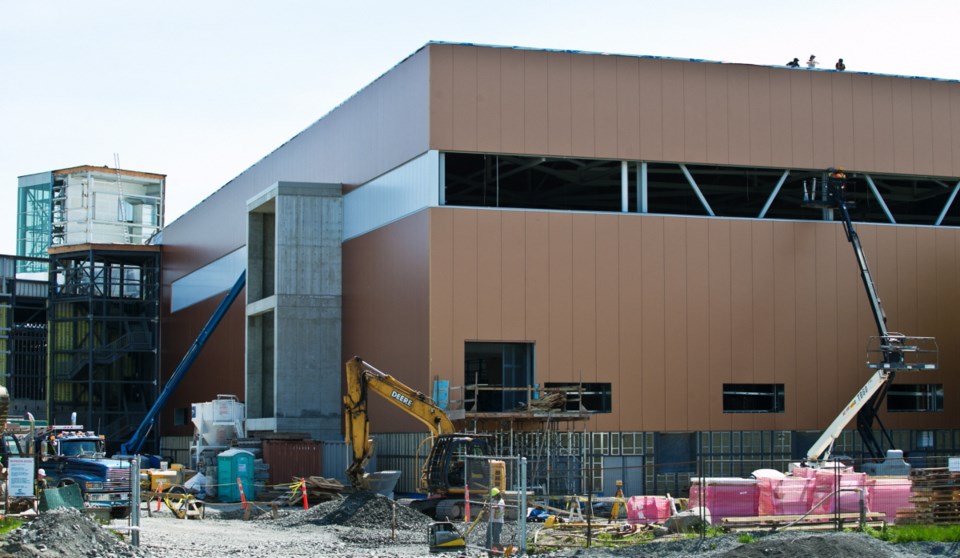Kinetic Construction’s Victoria office expects to hire 10 to 20 more tradespeople in the next year, reflecting a desire among more than half of B.C. construction companies to expand their workforces.
“We are looking to continue to hire on and be a major player on southern Vancouver Island,” Chris Chalecki, Kinetic vice-president and Victoria branch manager, said Monday.
“The industry has enjoyed recently a considerable amount of work out there.”
In a recent survey of the industry, the B.C. Construction Association and Construction Business magazine found that about half of the 473 respondents in all regions said they plan to hire in the next year and another 35 per cent are contemplating hiring.
Construction is a major economic player in the province, responsible for $83.6 billion of projects underway, with another $195 billion proposed, the association states.
Currently employing 190,000 workers in B.C., the construction industry anticipates that 30,500 jobs will be unfilled by 2021 because of labour shortages, the association said.
Despite a “slight slowdown … in the last five or six months,” Chalecki expects a resurgence in projects, including infrastructure, particularly in the public sector.
The planned sewage treatment project in the capital region is one example of construction opportunities on the horizon. Two new Island hospitals valued at about $600 million in total and the $1-billion John Hart generating station replacement up-Island are also in the works.
Already, finding “qualified experienced people is relatively difficult,” Chalecki said.
Kinetic, with branches in Courtenay and Vancouver, is particularly interested in carpenters and labourers, he said.
Many workers who fit the bill are off-Island. The construction sector has seen northern B.C. and the Alberta oil fields lure away large numbers of workers. Chalecki hopes that, when Island projects get underway, those workers will return.
Greg Baynton, Vancouver Island Construction Association CEO, said top skills needed locally include carpenters, electricians, gas fitters, metal fabricators, roofers, construction managers, and supervisors.
Increased competition from not only local but national and international firms is another factor affecting the industry.
Vancouver Island contractors perform 75 per cent of the work within their local area — the highest proportion among all the regions, the survey found.
“We do see many national and even international organizations, especially in the contracting field, expressing interest to compete over here,” Chalecki said.
As projects get bundled by different institutions to reach particularly high dollar values, it “tends to be beyond some of our local contractors’ means,” he said.
Local companies “have to sharpen our pencils really sharp these days in order to pull off work and be very intelligent about it as well.”
In some cases, local firms will partner with larger companies. For example, Victoria’s Farmer Construction is a member of the Tandem Health Partners team, selected to build hospitals in Campbell River and the Comox Valley.
Competition for work has been “really intense” over the last year and early this year, Baynton said. It has eased slightly in the past four to six weeks because there is more construction activity, an encouraging sign, he said.
He is cautiously optimistic that by the fall, a trend will be evident of additional steady work.
Baynton concurs that larger construction firms are increasingly turning their attention to the Island.
“It’s the size, scope and complexity of some of these jobs,” he said.
Players from around the world are attracted to projects, such as sophisticated design-and-build developments, which also require the ability to handle the high costs of chasing these complex jobs, Baynton said.



